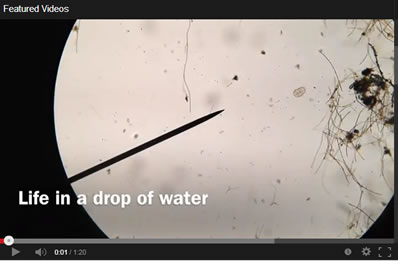Are We Preparing Graduates for the Past or the Future?
“Are we preparing students for the past or the future? A truly powerful question that forces everyone involved in education (and the business sector, for that matter) to rethink the essential skills needed for success outside of the classroom in a job market where most students are preparing for a job that probably does not exist yet. The answer to the question is ‘no’! Despite the valiant efforts of teachers and administrators, the students are not prepared for a volatile, uncertain, complex, and ambiguous future. Carol Carter at the Huffington Post shares her views on education and its need for change. She also shares wonderful resources to further study the needs of students now and in the future. ”
Two weeks ago, I spoke at the International Habits of Mind Conference in Malaysia alongside college and K-12 faculty from Southeast Asia and countries like Iran, New Zealand, and Australia. Outside of the conference, a question came up among some of the speakers:
Are we preparing students for the past or the future?
This question leads to even more questions: If education paradigms don’t shift to meet tomorrow’s needs, will high school and college graduates have the skills to find or create employment opportunities? Do schools and faculty have a responsibility to realize and adapt their lessons to our new economy’s needs and demands? If students aren’t in a learning environment where their gifts and talents can flourish, will they be able to participate in the rapidly changing global economy?
To understand how the working world has changed over the last few decades, let’s look at a typical work culture of the past:
- Orderly, predictable
- Single-skilled employees
- Hierarchical
- Big company based
- Individual-minded
- Corporate
- Local/national
- Hired for life
Now, compare that to aspects of the new work culture:
- Uncertain
- Multi-skilled employees
- Equal and flat structures
- Small business and start-up driven
- Collaborative
- “Work and lifestyle entrepreneur”
- Global
- Discrete jobs and tasks “for hire”
When comparing these two lists, I was reminded of a TED Talk by Dr. Randy Borum. He explained the changing demands we have for employees with the analogy of the hedgehog and the fox. Hedgehogs are anchored in their ways and will resize new ideas to fit their determined and singular way of thinking. In school and the working world, a hedgehog is someone who is knowledge focused, whereas a fox is someone who is learning focused. Borum further distinguishes how these two animals think using the following characteristics:
Hedgehog
- Has one organizing theory
- Deeply knowledgeable
- Self-confident
- Determined
Fox
- Can see through many lenses
- Broadly focused
- Self-critical
- Adaptive
We cannot be certain which specific skills the future will demand, but we can be certain that the ever-changing world will require people to navigate uncertain territory, often without a compass. This is why, Borum argues, the fox is more apt to succeed in a VUCA (Volatile, Uncertain, Complex, Ambiguous) future.
I agree with Borum to a point. Big business can’t rely on the same business method that grew success in the past. Large companies will have to value entrepreneurial thinkers and give employees the license to be “nimble and agile”–realizing opportunity in a timeframe that small companies can make happen — within the structure of a larger company. This will happen through partnerships, inter-company business incubators, and other novel approaches to foster ideas that promote change and growth.
Schools and colleges also need to add value to a student’s skill set by producing graduates who are agile thinkers. Today, the flipped classroom provides opportunities for students to prepare outside of class while using class time to collaborate, connect, and share their ideas with their peers as the teacher plays the role of coach. In the future, we’ll likely move beyond this model to real-life learning labs where students learn through experience; actively participate with content; match their learning with their interests, talents and abilities; and discover career paths that align with their strengths.
Dr. Peter Capelli, Director of the Center for Human Resources at the Wharton School and Professor of Education, questions the future of the hedgehog mode of thinking in his recent article, ”Focusing Too Narrowly in College Could Backfire.” Capelli says that while some students choose career paths based on economic predictions, we simply cannot predict the future. Capelli believes that choosing the wrong career path can be worse than choosing no career path. A student who gets a degree in an emerging technology that pays well today, may find herself out of work in the future when her position is replaced by the next new wave. In theory, a communications major is more nimble – like a fox – with his transferable thinking skills and has potential to be more adaptive across the industries.
Where I differ in opinion from both Borum and Capelli is that the fox and the hedgehog analogy cannot be either/or. Instead, it is both/and. You want a brain surgeon who is a hedgehog, but you also want your brain surgeon to be adaptive, communicating options as a medical partner as well as expert. Or take the student pursuing a technology degree. She can both have a successful technical career and be nimble in adapting to new technology standards in her field. We need students who possess core knowledge in math, writing, and reading skills. But employers say they also need new hires with critical thinking, interpersonal, and problem solving skills. To produce graduates who are both knowledge and learning focused, we need faculty to teach core academic skills in the context of their students’ personal and professional worlds. Without these practical connections, we will continue to produce ill-prepared graduates.
If we can foster more students and graduates who develop ingenuous ideas and are undaunted by what they don’t know, support them with mentors to coach and challenge them, and encourage within them a bold vision backed with adaptive and strategic thinking, soft and hard skills, then we will have the players who can create a thriving, dynamic economy. When students and graduates with these qualities encounter setbacks, they will have the inner faith and wherewithal to regroup and forge a new path. If they can cultivate the “dispositions of success,” a phrase from Art Costa and Bena Kallick’s new book, then they will be ready for anything in the professional world regardless of their SAT score, where they went to college, or what their first job was out of college. If we can make these shifts, we can strongly prepare students for anything they might face in a VUCA future.
In my next blog, I’ll share how we can transform our schools to reflect this both/and thinking. I invite you to answer in the comments, are we preparing our graduates for the past or the future in traditional K-12 and college classrooms






